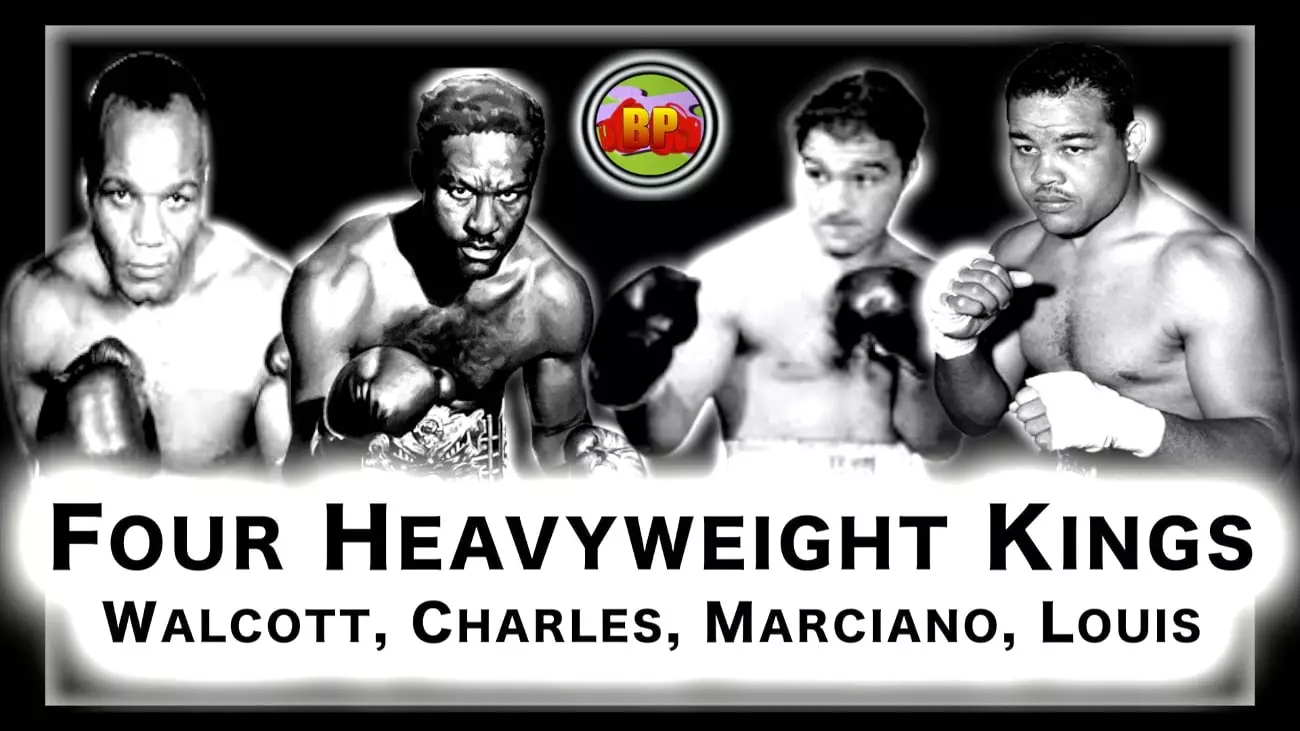The mid-20th century marked a new era in heavyweight boxing, particularly from 1947 to 1954, when four fighters stood tall: Joe Louis, Jersey Joe Walcott, Ezzard Charles, and Rocky Marciano. These men, often overshadowed by their illustrious predecessors and the subsequent legends of the sport, carved out a narrative that echoes through history—one defined by fierce rivalries and iconic battles that are often underappreciated today. While contemporary boxing fans often reminisce about the “Five Kings” rivalry of Leonard, Hearns, Hagler, Duran, and Benitez, the saga of these four heavyweight titans deserves equal recognition for the drama and excellence it brought to the sport.
A Time of Genuine Competition
It is astonishing to consider that, unlike today’s era where dodge-and-weave becomes a regular strategy outside the ring, heavyweight champions of the late 1940s and early 1950s fought one another with vigor and purpose. Just as fans today wonder what it would be like if today’s stars—Anthony Joshua, Tyson Fury, and Deontay Wilder—went head-to-head without the barriers of promotional disputes or weight classes, back then, the best truly fought the best. This factor alone adds a layer of authenticity to the legacies of Louis, Walcott, Charles, and Marciano.
The rivalry was ignited in 1947 when Joe Louis faced Jersey Joe Walcott at Madison Square Garden. This was not merely a bout; it was a clash of wills that saw a turning point in Louis’s storied career. Many thought Walcott would upset the heavyweight champion, and indeed, he came exceedingly close, losing by a narrow decision. Their rematch in 1948 was equally thrilling, with Louis coming back to reclaim his might in an encounter that showcased the drama of boxing and the resilience of both fighters.
The Rise and Fall of Champions
The year 1949 saw the transition in heavyweight leadership emerge more evidently than ever. Joe Louis retired, prompting a match between Walcott and new contender Ezzard Charles to determine who would take up the championship. Surprisingly, these were not the household names that fans might expect; many viewed them in light of Louis’s grand legacy. Yet, it was in this bout that Charles established himself as a worthy champion, ultimately changing the course of heavyweight boxing.
Charles’s reign came with its own challenges, most notably through his encounters with Louis, who staged a comeback in 1950, leading to yet another compelling narrative. Louis faced Charles once again, a tension-filled fight marked by its implications for what both men meant to the division. At this point, old rivalries began to blend into new ones, adding complexity to a tightly contested era.
The turn of events, however, did not end there. In 1951, Charles and Marciano faced each other, splitting their wins, and opening up what would become one of the most heated rivalries of the period. Their bouts were defined by a violent intensity, culminating in a spectacular confrontation that has become iconic among boxing aficionados. It’s a reminder of how raw and emotional these moments were—where victories and defeats could alter careers in an instant.
As this riveting saga progressed, 1953 arrived with a startling finale, welcoming the definitive championship bout among these titans. It became a pivotal moment in boxing history, with no doubt left as to who emerged as the face of the heavyweight division. By 1954, the boxing world was treated to a dramatic conclusion with a final duel that pitted the reigning champion against one who wasn’t ready to fade quietly into retirement.
What makes the saga of the Four Heavyweight Kings so unique is its legacy, one that encapsulates the essence of competition, tenacity, and the unpredictability of sports. Fans are often left pondering what could have been had legendary figures like Archie Moore entered the fray earlier, challenging both Louis and Marciano in their prime.
In retrospect, the epic narratives provided by these four men are not just stories from an unearthed past; they are reminders of the spirit of boxing, echoing the musical chants of past arenas filled with hope and heartbreak. Each match is not just a contest of strength, but a theatrical performance, staged against the canvas of boxing history. For fans of the sport or those unfamiliar with this era, there exists a wealth of understanding and appreciation to be gained by diving into the treasure trove of boxing’s golden years. In a world often burdened by disputes and negotiations, may we remember the era where champions fought champions—and how exhilarating it feels to witness greatness.

